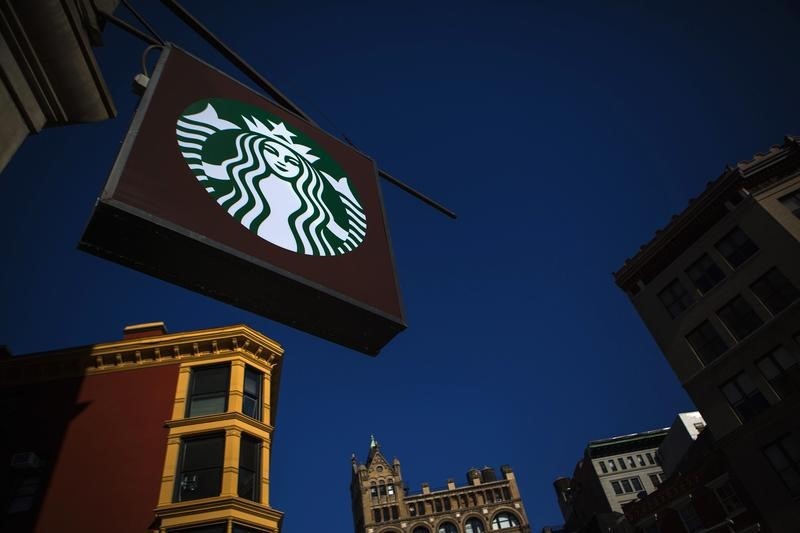Starbucks should spin off its China business, Bank of America says
Bank of America analysts suggested in a note Wednesday that Starbucks (NASDAQ:SBUX ) should consider spinning off its China business due to its volatility, lower profitability, and slower growth compared to other markets.
BofA highlights that from 2010 to 2017, Starbucks’ China-Asia Pacific (CAP) segment achieved strong same-store sales growth (SSSG), averaging 10%.
However, they add that since COVID-19, Starbucks China’s SSSG has dropped to an average of -3%, with store EBITDA down approximately 40% from its peak in early 2021.
The analysts note that Starbucks remains well-positioned in China, but the overall market growth has slowed.
"Starbucks [is] still advantaged, but [the] market growth has moderated," states BofA.
China’s GDP growth, which is closely correlated with Starbucks’ performance, has been sluggish, and deflationary pressures have resulted in negative ticket growth. In addition, BofA says while coffee consumption is on the rise, it remains low compared to other Asian markets like Japan.
BofA states that spinning off the China business would have a limited impact on Starbucks’ financials, as it could shift to a licensing model.
The bank estimates that licensed stores generate lower margins but still contribute to the company’s overall profitability. A licensing model in China could help reduce volatility and improve the company’s return on investment (ROI).
Moreover, they explain that this strategy would allow Starbucks management, particularly new CEO Brian Niccol, to concentrate on the U.S. market, which accounts for 73% of its 2023 EBITDA before corporate expenses.
BofA raises its price target for Starbucks to $118 in the note, citing improved confidence in the company’s execution. The analysts also increased their earnings-per-share (EPS) estimate for fiscal 2027, projecting steady-state comparable sales growth at 4%, up from 3.6% previously.
The bank concludes that a China spin-off would help Starbucks achieve higher returns and reduce managerial burdens while allowing the company to focus on its core U.S. market.
Source: Investing.com
